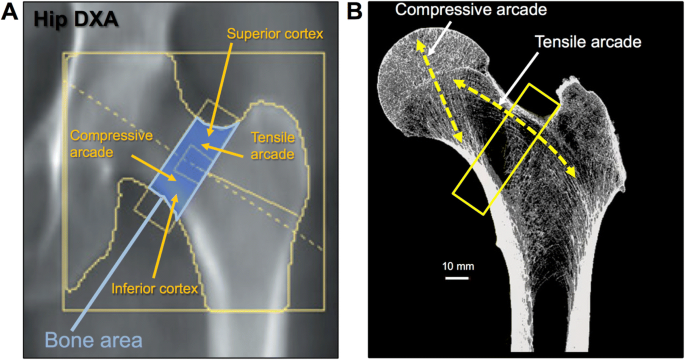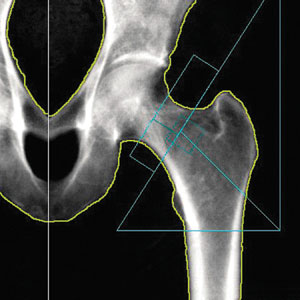
Bone Density Scan Alamogordo As we age, our bones become more prone to developing osteoporosis, a condition characterized by a reduction in bone density and an increased risk of fractures. However, osteoporosis is not limited to older adults only, as it can also affect younger individuals, especially women who have gone through menopause.
What is Bone Density Scan Alamogordo:
Bone Density Scan Alamogordo To detect osteoporosis and other bone-related conditions, doctors may recommend a bone density scan, also known as a bone mineral density (BMD) test. In Alamogordo, New Mexico, several medical facilities offer bone density scan services, which can help diagnose and monitor bone health issues. In this article, we will discuss the importance of bone density scans, the procedure, and what to expect from the results.
Importance of Bone Density Scan in Alamogordo:
A bone density scan is a non-invasive procedure that measures the amount of calcium and other minerals in your bones. It can help determine your risk of developing osteoporosis or other bone-related conditions, such as Paget’s disease or osteogenesis imperfecta. Additionally, the test can also help monitor the progression of osteoporosis or other bone conditions and assess the effectiveness of treatments.
In Alamogordo, bone density scans are especially important for older adults, women who have gone through menopause, and individuals with a family history of osteoporosis. People who have a history of smoking, excessive alcohol consumption, or long-term use of certain medications (such as corticosteroids) may also benefit from bone density scans.
Bone Density Scan Procedure
Bone density scans are quick and painless procedures that usually take around 15-30 minutes. The most common type of bone density scan is a dual-energy X-ray absorptiometry (DEXA) scan, which uses low-dose X-rays to measure bone density. During the procedure, you will lie down on a table, and a machine will scan the bones in your hips, spine, and sometimes your forearm.
Before the scan, you may be asked to change into a gown and remove any metal objects from your body, such as jewelry or belts. You may also be asked to avoid calcium supplements or medications containing calcium for 24 hours before the test.
What to Expect from Bone Density Scan Results:
After the bone density scan, your doctor will review the results and determine if you have normal bone density, low bone density (osteopenia), or osteoporosis. The results of the test will be reported as a T-score, which is a comparison of your bone density to that of a healthy young adult of the same sex.
A T-score between +1 and -1 is considered normal bone density, while a T-score between -1 and -2.5 indicates low bone density (osteopenia). A T-score of -2.5 or lower indicates osteoporosis.
If your bone density scan shows low bone density or osteoporosis, your doctor may recommend lifestyle changes, such as increasing your calcium and vitamin D intake, exercising regularly, and avoiding smoking and excessive alcohol consumption. They may also recommend medications to slow down bone loss or increase bone density.
Conclusion:
A bone density scan is a valuable tool in assessing and monitoring bone health. In Alamogordo, several medical facilities offer bone density scan services to help diagnose osteoporosis and other bone-related conditions. The procedure is quick, painless, and non-invasive, and the results can provide vital information about your bone density and your risk of developing osteoporosis or other bone conditions. If you are concerned about your bone health, talk to your doctor about whether a bone density scan is right for you.
Bone Density Scan Alamogordo How Its Work?
A bone density scan is a non-invasive medical test that measures the amount of calcium and other minerals present in the bones. The most common type of bone density scan is a dual-energy X-ray absorptiometry (DEXA) scan, which uses low-dose X-rays to produce images of the bones.
During the procedure, the patient lies down on a table while a scanning arm passes over the body. The scan typically focuses on the bones in the hip, spine, and sometimes the forearm. The scan takes only a few minutes to complete, and the patient remains fully clothed during the procedure.
The DEXA scan measures bone mineral density (BMD) using two X-ray beams with different energy levels. One beam is absorbed mainly by soft tissue and the other by bone. The amount of each X-ray beam that passes through the bone is measured by a detector. This information is used to calculate the BMD of the bone being scanned.

If you want to get amazing benefits by using this link
Bone Density Scan Alamogordo Final Information:
The BMD results are reported as a T-score, which is a comparison of the patient’s bone density to that of a healthy young adult of the same sex. A T-score between +1 and -1 is considered normal bone density, while a T-score between -1 and -2.5 indicates low bone density (osteopenia). A T-score of -2.5 or lower indicates osteoporosis.
Bone density scans are quick, painless, and non-invasive. They do not require any preparation beforehand, although patients may be asked to avoid calcium supplements or medications containing calcium for 24 hours before the test. It is important to inform the doctor if you have had any recent X-rays or other imaging tests using contrast dye, as this may interfere with the accuracy of the bone density scan.
Bone density scans are typically recommended for postmenopausal women and men over the age of 70. However, they may also be recommended for younger women and men with certain risk factors for osteoporosis, such as a family history of the disease, low body weight, or a history of smoking or excessive alcohol consumption.
Final Words:
In conclusion, a bone density scan is a valuable tool for assessing and monitoring bone health. The DEXA scan is the most common type of bone density scan, which uses low-dose X-rays to measure bone mineral density. The procedure is quick, painless, and non-invasive, and the results can provide vital information about your bone density and your risk of developing osteoporosis or other bone conditions. If you are concerned about your bone health, talk to your doctor about whether a bone density scan is right for you.



